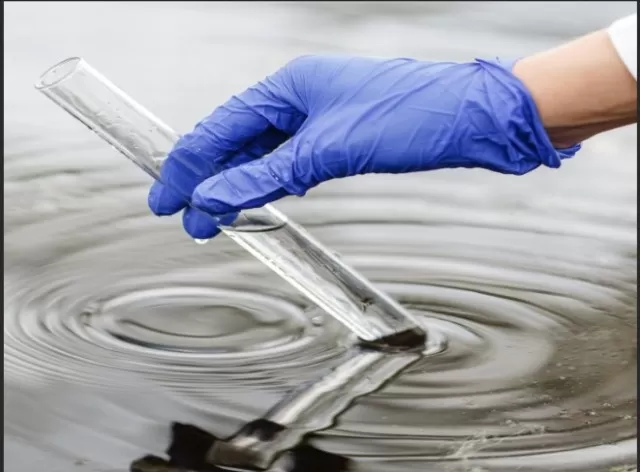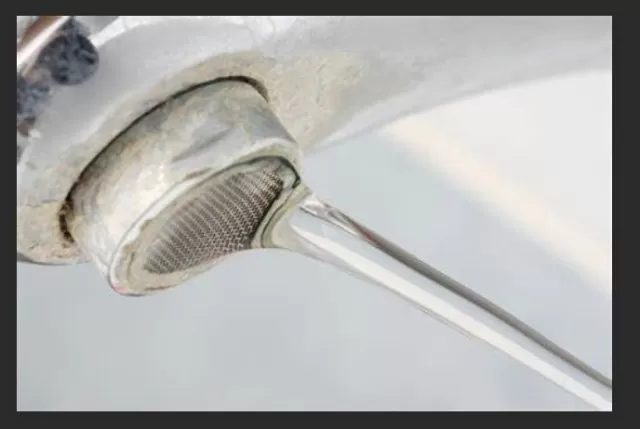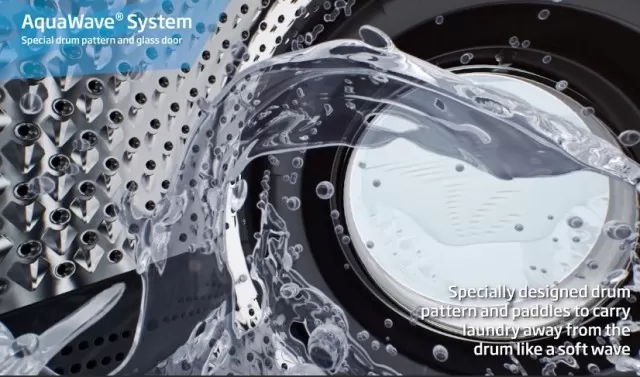Indications for Water Softener Need: Watch for These Signs. Water, often regarded as a simple and essential element, holds hidden complexities that escape our everyday perception.
While many Americans associate water with the notion of being “wet,” there exists a realm of attributes that often go unnoticed. The encounter with one of water’s less glamorous traits, hardness, has compelled numerous residential water users to reconsider their relationship with this ubiquitous resource. Hardness, a measure of mineral concentration within water, predominantly comprising calcium and magnesium, along with trace amounts of other metals, subtly influences the quality of our daily routines.
The impact of hard water extends beyond mere semantics, making its presence known in the practicalities of everyday life. Ordinary tasks such as showering, laundering clothes, and washing dishes can be marred by its effects. The U.S. Geological Survey lends insight into the diversity of mineral content within drinking water supplies across the nation. Soft waters grace regions like New England, the South Atlantic-Gulf States, the Pacific Northwest, and Hawaii, while the embrace of hardness is felt most strongly in the streams of Texas, New Mexico, Kansas, Arizona, and southern California. The undeniable truth, however, is that no corner of the country remains immune to the potential woes of hard water.
Insights from a Comprehensive Professional Water Analysis

Determining the Suitability of Water Softening through Expert Testing.
Discovering whether your water could benefit from a water softener involves a crucial step: arranging a professional assessment of your water quality.
While readily available DIY testing kits can be found at home improvement stores, they often lack the precision and detailed analysis provided by a professional evaluation. Numerous reputable companies extend the convenience of take-home sampling kits, allowing you to collect a water sample and send it in for meticulous examination, typically for a nominal fee.
.
In instances where your water is sourced from municipal systems, a simple inquiry with the local water department can yield information about the water’s hardness level.
Municipalities are often equipped to furnish data on the hardness of your water supply. .
Water composition is classified based on the concentration of dissolved calcium carbonate, measured in milligrams per liter (mg/L).
The classification ranges are as follows: .
– Soft to Slightly Hard: 0 to 60 mg/L- Moderately Hard: 61 to 120 mg/L- Hard: 121 to 180 mg/L- Very Hard: More than 180 mg/L.
By obtaining a comprehensive analysis of your water’s calcium carbonate content, you can make informed decisions about implementing a water softening solution, ensuring your water meets the desired quality for various applications.
The Bane of Stains: Consequences of Hard Water
The presence of dissolved minerals and metals in hard water can wreak havoc in your home, manifesting as unsightly and obstinate stains on various surfaces such as sinks, toilets, and bathtubs.
Additionally, hard water is notorious for leaving behind a trail of white, scaly deposits that accumulate around your faucets, diminishing their aesthetic appeal and functionality. .
A quick yet temporary remedy for tackling stains that mar the beauty of your fixtures involves a concoction of one cup of bleach combined with half a cup of powdered dishwasher detergent.
Allowing the stain to soak in this solution can offer a momentary reprieve from these stubborn marks. .
When it comes to banishing the chalky residue that accumulates on your faucets, a trusty household companion comes to the rescue: white vinegar.
A few spritzes of white vinegar followed by a brief waiting period can help loosen the deposits. Afterward, a thorough rinse and diligent wipe-down with a soft cloth can restore the faucet’s gleam and luster.
.
The battle against staining caused by hard water demands vigilance and proactive measures, ensuring your living spaces remain pristine and inviting.
The Peril of Scale Accumulation

In the realm of water-related challenges, the menace of mineral deposits, often referred to as scale or limescale, poses a persistent threat.
This insidious accumulation can stealthily coat your everyday items such as pots, coffeepots, teakettles, dinnerware, glassware, and cutlery. The aftermath of this unwelcome presence is evident in the form of an unyielding, chalky film that clings tenaciously, defying your efforts to remove it.
Regrettably, the havoc doesn’t stop there.
The relentless advance of scale extends its reach into the inner workings of household appliances that rely on water, infiltrating dishwashers and washing machines. These essential machines, which diligently serve us, become unwitting hosts to the encroaching scale, jeopardizing their efficiency and longevity.
The most alarming consequence of scale’s stealthy conquest is its infiltration of your plumbing system.
As it takes root within the intricate pathways of pipes, it gradually constricts the flow of water, impairing the system’s functionality and resilience. The eventual outcome is a potentially distressing scenario: the need for costly repairs, as the plumbing system’s integrity becomes compromised.
To safeguard your belongings, appliances, and plumbing infrastructure, proactive measures are indispensable.
A battle against scale demands a multi-faceted strategy, ranging from regular maintenance routines to exploring effective water softening solutions. By fending off scale’s encroachment, you can preserve the smooth operation of your household and avert the financial burden of unforeseen repairs.
Elevated Utility Expenses: A Warning Signal for Scale Concerns
Should the figures on your utility bills start to climb, it’s a prudent move to turn your attention towards your home’s plumbing infrastructure to ascertain whether the culprit is scale buildup.
This gradual accumulation of scale can surreptitiously obstruct your pipes, setting off a chain reaction that reverberates throughout your household.
As this scaling phenomenon takes hold, your heating system is thrust into an arduous battle.
It’s tasked with surmounting the resistance posed by clogged pipes, a struggle that amplifies its workload. The result? An increased demand for energy as your heating system exerts itself to maintain the flow of water despite the impediments.
.
Furthermore, the insidious grip of scale isn’t limited to pipes alone; it extends its reach to the efficiency of essential equipment like boilers and hot water heaters.
These components, designed to operate with optimum energy efficiency, find their performance stifled by the presence of scale. This unwelcome intruder forms a barrier that hampers heat transfer, forcing these systems to toil harder and consume more energy to fulfill their intended functions.
In a world where energy conservation and financial prudence are paramount, addressing the specter of scale is an imperative undertaking.
Timely intervention, such as proactive maintenance and consideration of water softening solutions, can restore harmony to your plumbing and heating systems. By vanquishing the scourge of scale, you can mitigate the strain on your utility bills and embrace a more sustainable and cost-effective living environment.
Dull, Lifeless Laundry: The Impact of Hard Water

The presence of hard water casts a shadow over the vitality of your laundry endeavors, affecting the very essence of your linens and clothing.
The potency of soap and laundry detergents is hampered by the mineral content in hard water, diminishing their effectiveness. This setback paves the way for an unsightly aftermath characterized by a lingering, scummy residue that clings to fabrics.
As this unwanted residue permeates your textiles, a series of undesirable transformations ensue.
Colors lose their vibrancy, leaving garments faded and lackluster, shrouded in a muted grayness. The unmistakable charm of freshly laundered linens is replaced by an unappealing dullness that dampens their visual appeal.
A sour aroma, evoking neglect rather than cleanliness, may creep into your fabrics.
This unwelcome scent becomes an uninvited companion, dulling the delight of freshly washed laundry. In tandem with the fading colors, the texture of your linens and clothing undergoes an unfortunate metamorphosis.
Once-soft fabrics turn coarse and scratchy, a stark contrast to the comfort they once provided.
The repercussions extend further as the cumulative effects of washing in hard water conspire to prematurely age your beloved textiles.
The tenacity of hard water causes fibers to weaken, leading to premature wear and tear. The fabrics that embrace your daily life and personal style are subjected to an accelerated aging process, their lifespan shortened by the harsh realities of hard water.
Amidst this struggle, a remedy lies within reach.
By acknowledging the challenge of hard water and adopting strategies to counteract its effects, you can preserve the vitality of your laundry and ensure that your linens and clothing continue to exude the freshness and quality they deserve.
*The information is for reference only.